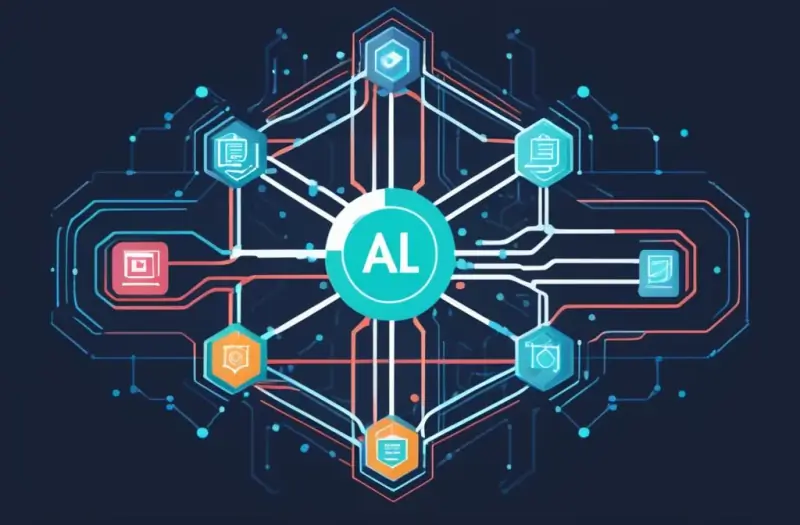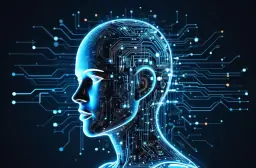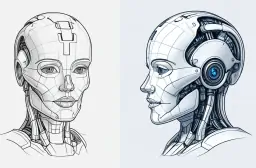AI Frameworks & Libraries: Top Tools for Developers

Table of Contents
The rapid evolution of artificial intelligence (AI) has reshaped numerous industries, from healthcare to finance, and continues to push the boundaries of what machines can achieve. At the core of this transformation are AI frameworks and libraries—the essential tools that power machine learning development. These frameworks not only streamline the development process but also enable us to build, train, and deploy sophisticated AI models with unprecedented ease and efficiency. In this article, we’ll explore the significance of AI frameworks and libraries, delving into their role in the future of machine learning development.
What Are AI Frameworks and Libraries?
Understanding AI Frameworks
AI frameworks are comprehensive platforms or environments designed to simplify the process of creating AI applications. They provide developers with a structured, reusable codebase that can be adapted for a wide range of AI tasks, such as image recognition, natural language processing, and predictive analytics. By leveraging these frameworks, we can avoid the complexities of building AI models from scratch, thereby accelerating development and reducing the likelihood of errors.
The Role of Machine Learning Libraries
On the other hand, machine learning libraries are collections of pre-written functions and algorithms that make it easier to implement specific tasks in AI development. These libraries offer a variety of tools, ranging from basic statistical functions to complex neural network architectures, that help us develop and optimize machine learning models. Whether we’re working with deep learning frameworks or simpler machine learning tasks, libraries play a crucial role in ensuring that our models are both efficient and effective.
The Intersection of AI Frameworks and Libraries
The synergy between AI frameworks and libraries is what truly drives innovation in machine learning. While frameworks provide the overarching structure, libraries offer the specific tools needed to tackle unique challenges within that structure. This combination allows us to build highly customized AI solutions that meet the specific needs of various industries.
Popular AI Frameworks Driving Machine Learning Development

TensorFlow: The Versatile AI Framework
TensorFlow is one of the most popular AI frameworks, developed by Google Brain. It’s known for its versatility, supporting everything from simple neural networks to complex deep learning models. TensorFlow’s vast ecosystem includes machine learning libraries like TensorFlow Lite for mobile devices and TensorFlow Extended (TFX) for production-scale machine learning. The framework’s flexibility makes it a go-to choice for both beginners and experienced developers.
PyTorch: The Preferred Framework for Research
PyTorch, developed by Facebook’s AI Research lab, has gained widespread popularity in the research community due to its dynamic computation graph and user-friendly interface. PyTorch’s seamless integration with Python and its extensive library support have made it a preferred choice for developing and testing new AI models. Its ability to perform real-time computations on a per-operation basis offers significant advantages when experimenting with novel architectures.
Keras: The High-Level Deep Learning Framework
Keras is a high-level deep learning framework that runs on top of other frameworks like TensorFlow and Theano. It’s designed to enable quick prototyping, which is ideal for research and experimentation. Keras abstracts much of the complexity of AI development, allowing us to focus on the design and tuning of neural networks rather than the underlying code. Its modular design and ease of use have made it a popular choice for beginners and experts alike.
Specialized AI Libraries Enhancing Development
Scikit-Learn: Simplifying Machine Learning
Scikit-Learn is a powerful machine learning library that provides simple and efficient tools for data mining and data analysis. It’s built on top of Python libraries like NumPy, SciPy, and matplotlib, making it a vital component of the AI development platforms we use today. Scikit-Learn is particularly valuable for tasks such as classification, regression, clustering, and dimensionality reduction, offering a wide range of algorithms out of the box.
OpenCV: Computer Vision Made Accessible
When it comes to computer vision tasks, OpenCV (Open Source Computer Vision Library) is the go-to library. It includes a vast collection of algorithms for image and video processing, enabling us to develop applications ranging from object detection to facial recognition. OpenCV’s real-time capabilities and support for multiple programming languages make it an essential tool in the arsenal of any AI developer focused on visual data.
NLTK: The Natural Language Toolkit
For those of us working on natural language processing (NLP) tasks, the Natural Language Toolkit (NLTK) is an invaluable resource. This library provides tools for tasks such as tokenization, parsing, stemming, tagging, and more. NLTK simplifies the process of working with textual data, allowing us to build sophisticated NLP models that can understand and generate human language.
The Impact of AI Frameworks and Libraries on Industry

Accelerating AI Development Across Sectors
AI frameworks and libraries have had a profound impact on various industries by accelerating the development of AI applications. In healthcare, for example, frameworks like TensorFlow and PyTorch have enabled the creation of models that can predict diseases with high accuracy. In finance, these tools are used to develop algorithms for fraud detection, risk assessment, and algorithmic trading. The scalability and flexibility of AI frameworks allow us to apply machine learning techniques to an ever-growing range of problems, driving innovation across the board.
Democratizing Access to AI Technology
One of the most significant benefits of modern AI frameworks and libraries is their role in democratizing access to AI technology. Tools like Keras and Scikit-Learn have made it easier than ever for developers of all skill levels to engage in AI programming. This accessibility is crucial in ensuring that the benefits of AI are widely distributed, enabling businesses of all sizes to harness the power of artificial intelligence.
Enabling Real-Time AI Applications
The development of AI infrastructure through frameworks and libraries has paved the way for real-time AI applications. From self-driving cars to personalized recommendations, AI models are increasingly being deployed in environments where real-time decision-making is essential. Frameworks like PyTorch, with its dynamic graph computation, are particularly well-suited for these applications, allowing us to develop AI systems that can adapt and respond to new data on the fly.
Future Trends in AI Frameworks and Libraries
The Rise of AutoML
One emerging trend in the world of AI frameworks is the rise of AutoML (Automated Machine Learning). AutoML tools are designed to automate the process of selecting, training, and tuning machine learning models, making it easier for non-experts to develop high-quality AI applications. As these tools become more sophisticated, we can expect to see a growing number of AI frameworks that integrate AutoML capabilities, further lowering the barrier to entry for AI development.
Integrating AI with Edge Computing
Another trend to watch is the integration of AI with edge computing. As more devices become connected through the Internet of Things (IoT), there’s a growing need for AI models that can run on edge devices with limited computational resources. Frameworks like TensorFlow Lite are already addressing this need, allowing us to deploy AI models on mobile devices, sensors, and other edge computing platforms. This trend is likely to accelerate as the demand for real-time, on-device AI processing continues to grow.
Enhancing Explainability in AI Models
As AI models become more complex, there’s an increasing demand for tools that can help us understand how these models make decisions. Explainability is a key focus area in AI research, and future frameworks and libraries are expected to include features that make it easier to interpret and explain the behavior of AI models. This will be particularly important in regulated industries like healthcare and finance, where transparency is critical.
The Role of Open Source in AI Frameworks
Collaboration and Innovation
The open-source nature of many AI frameworks and libraries has been a driving force behind the rapid advancements in the field. By making the source code available to everyone, open-source projects foster collaboration and innovation, enabling developers from around the world to contribute to and improve the tools we use. This collective effort has led to the creation of some of the most powerful AI tools available today, including TensorFlow, PyTorch, and Scikit-Learn.
The Importance of Community Support
In addition to fostering innovation, open-source projects benefit from robust community support. This support comes in the form of documentation, tutorials, forums, and other resources that help developers get up to speed with new tools quickly. The community-driven nature of open-source AI frameworks ensures that these tools are continuously updated and improved, keeping pace with the latest developments in the field.
Ensuring Longevity and Sustainability
One of the challenges with open-source projects is ensuring their longevity and sustainability. Many open-source AI frameworks rely on the contributions of volunteers, which can lead to issues with long-term support and maintenance. However, the growing interest in AI has led to increased investment from both companies and non-profit organizations, helping to ensure that key frameworks and libraries remain viable for years to come.
FAQs
What are AI frameworks?
AI frameworks are platforms or environments designed to simplify the development of AI applications. They provide reusable codebases and tools for building, training, and deploying AI models.
How do machine learning libraries differ from AI frameworks?
Machine learning libraries are collections of functions and algorithms that assist with specific tasks within AI development, while AI frameworks offer a broader structure for building entire AI applications.
Why are AI frameworks important for machine learning development?
AI frameworks are essential because they simplify and accelerate the development process, allowing us to build complex AI models without starting from scratch.
What are some popular AI frameworks?
Some popular AI frameworks include TensorFlow, PyTorch, and Keras. These frameworks are widely used for a range of AI applications, from research to production.
How does open source contribute to AI framework development?
Open-source AI frameworks benefit from collaboration and innovation, as developers worldwide can contribute to and improve the tools. This has led to the creation of some of the
Popular Tags
ADS SPACE HERE


